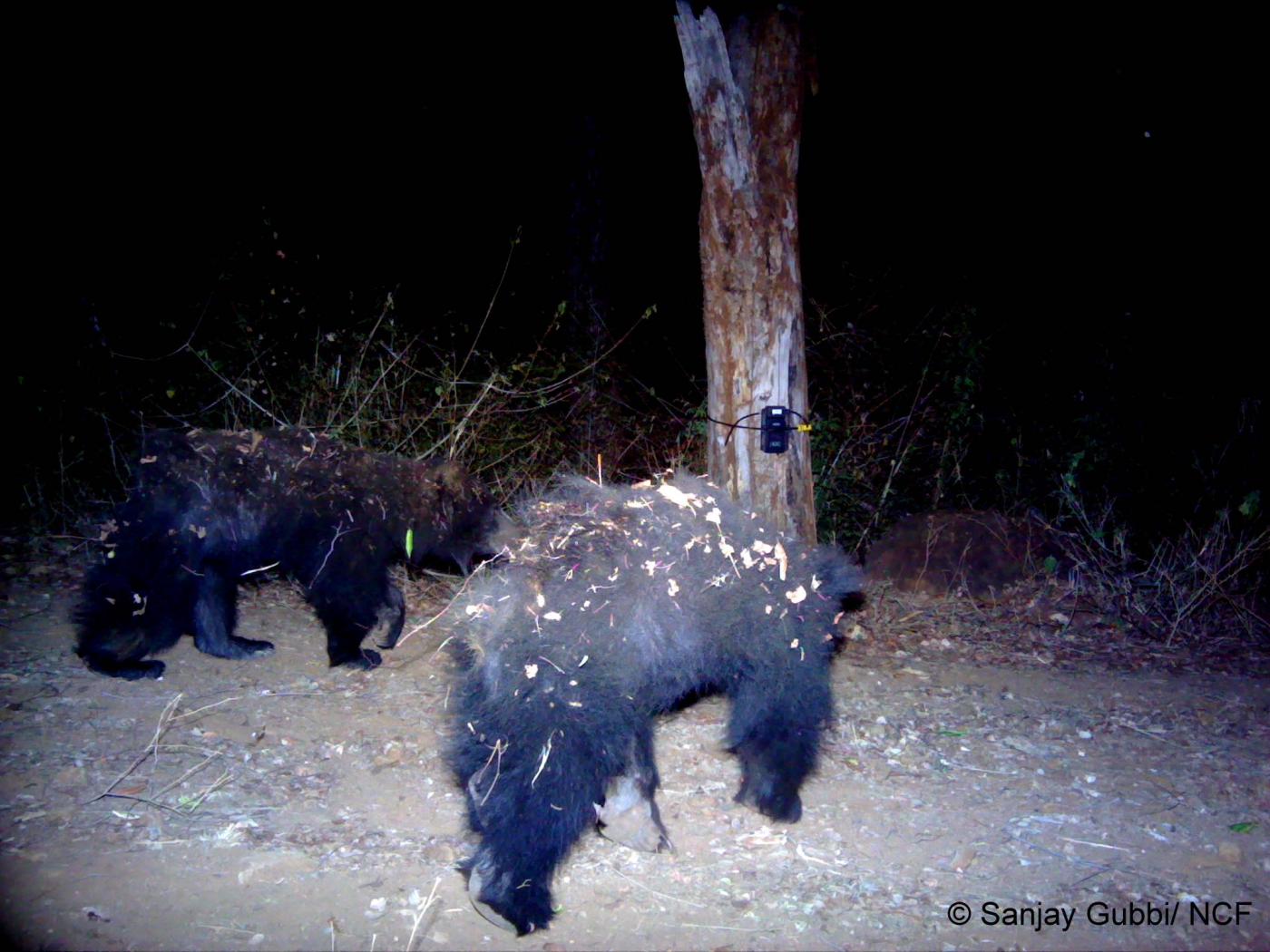
Photo: Sanjay Gubbi/Nature Conservation Foundation.
Wildlife research projects, especially those focused on estimating the abundance and densities of large mammals, are time- and resource-extensive. Large carnivores like leopards have home ranges that cover many square kilometres. To implement a good study to understand their numbers, we need to be able to document the number of individuals in a certain area without making too many mistakes or losing track.
To tackle the need for efficiency, robustness and to reduce manual effort, researchers are increasingly employing innovative techniques to collect and analyse data. In this regard, camera traps make work a lot easier, and being able to document the data as photographs is a huge plus.
Sanjay Gubbi’s team at the Nature Conservation Foundation has been studying leopards and their prey throughout the protected areas and forests of Karnataka for around a decade, and camera traps have been indispensable to them.
Camera traps aren’t new. According to some records, versions of these cameras have been around since the late 1890s or early 1900s.
In the modern form, a camera-trap is a battery-operated, motion-triggered camera that captures images when an infrared beam is interrupted by a human or animal – though in many cases insects and falling leaves trigger them too.
So we get two kinds of images. One kind is the ‘false trigger’. The other kind are effectively millions of photographs that Gubbi’s team has collected, sorted and analysed over time. This effort used to be manual but can be expedited today with software.
Here are some figures from our largest site. Out of nearly three lakh images we captured, around 94% were images of humans, livestock, species other than leopards and false triggers. But a small, and valuable, fraction of this 94% makes for some of the most entertaining images of the bunch – a collection our team loosely calls ‘selfies, interesting images and “what are we looking at?”‘. These include fun behaviour, tantrums, poses, headstands, dance jigs, even face-offs.
This small fraction is the result of a humongous effort – a lot of hard work that goes into collecting, analysing and tagging these images, making these images that much more valued.
All photos were provided by Sanjay Gubbi/Nature Conservation Foundation.










Camera-traps open windows into the secret world of animals we may not get to see otherwise. We started using camera traps in 2013 to monitor leopard abundance and density in Karnataka’s wild landscapes. Considering how unique these devices are, they often stolen – but animals are seldom to blame. Of the 540 camera traps we have acquired to date, we have lost 60 to animal curiosity and no less than 140 to human curiosity.
These images are wonderful resources to study, especially those captured at night, because they illuminate an elusive world. Thanks to them, we have watched generations of leopards unfold before our eyes, marvelled at the large distances they travel, been baffled by their acrobatics and observed the occasional hunt, too. There are also unidentified photographs of disembodied limbs and wings at the frame’s edge, or the occasional celestial blur shooting across the night sky.
Phalguni Ranjan is a marine biologist working as a science and conservation communicator with the Western Ghats Programme, Nature Conservation Foundation.

